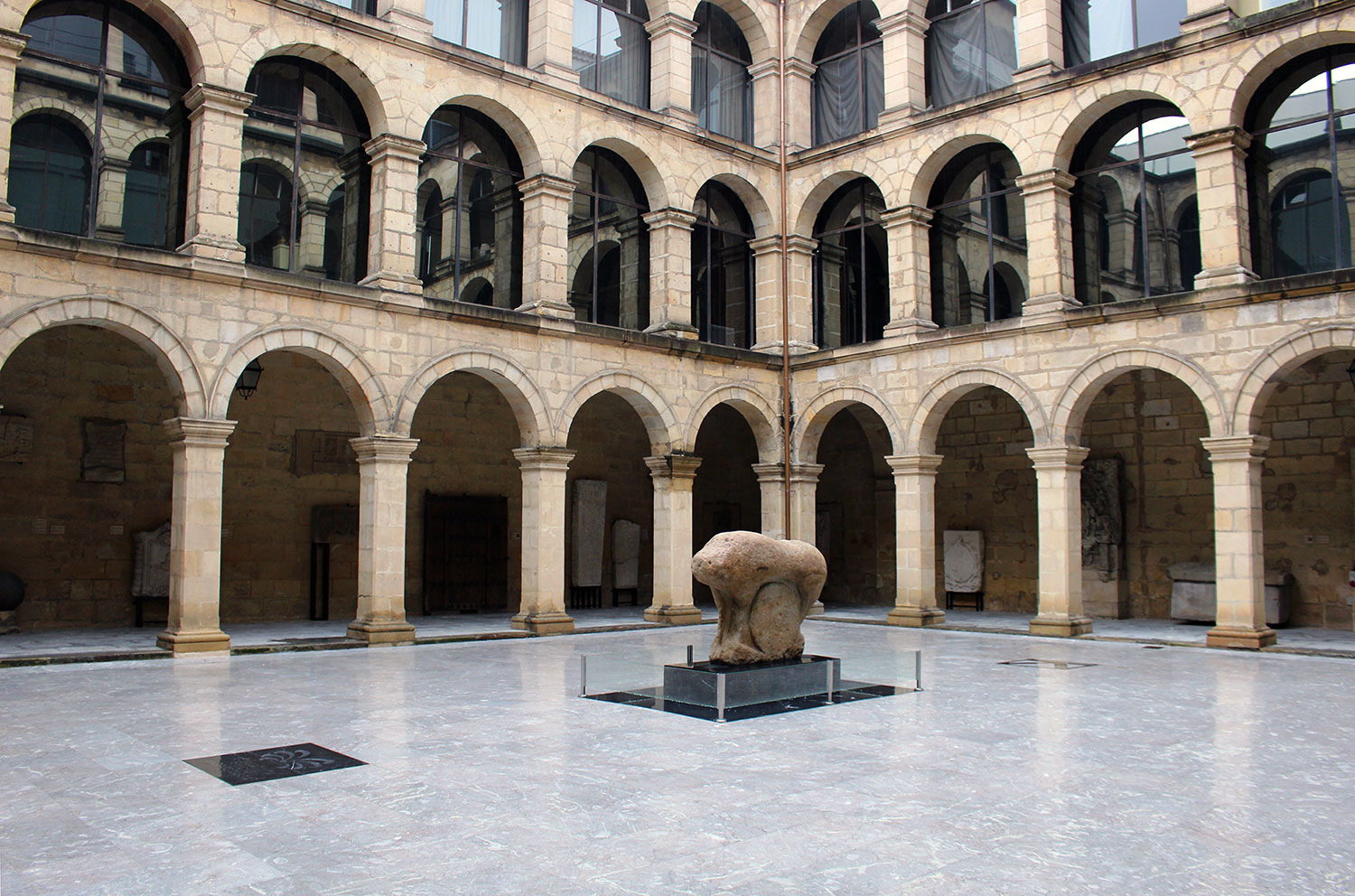LEPOKO ZAPIA – TOKILA – MANTUA
Gorputzaren goiko zatia babesteko funtzioa betetzen zuten piezen artean aukera zabala zegoen. Erabilera praktikoa edo asmo estetikoaren arabera aldatzen ziren jatorria, itxura, prezio edo neurria.
Etxean egindako lihozko zapi edota puntuz egindako artilezko tokillekin batera topatu zitezkeen modu industrialean ekoiztutakoak. XIX. mendean nagusiki Gipuzkoan sortutako lantegiek eskuragarriago egin zituzten kanpoko marrazkiak berregiten zituzten zapiak, Villabona-Amasako Subijana y Compañían, edota puntuzko lepoko eta mantuak, Tolosako Doussinague lantegian, kasu.
Piezarik ikusgarrienak, berriz, XVIII. mendetik aurrera atzerritik iritsi eta moden eraginez hedatutako mantoiak ziren. India aldetik ekarri eta Britainia Handian errotutako zapiak, bizitzaren zuhaitzean oinarritutako apaindura duten Kaxmir lurraldeko mantoiak, Filipinetatik iritsitako Manilakoak… Ospakizun handienetarako gordetzen ziren.
PAÑUELO – TOQUILLA – MANTÓN
Había una amplia posibilidad de elección entre las piezas que cumplían la función de proteger la parte superior del cuerpo. Dependiendo de su uso práctico o la intención estética, podían encontrase piezas de muy diversa procedencia, aspecto, precio o medida.
Los pañuelos de lino o las toquillas de lana hechas en punto en casa convivían con las producidas de manera industrial. Las fábricas surgidas principalmente en Gipuzkoa hicieron más accesibles los pañuelos que recreaban diseños y dibujos de otros lugares, en el caso de la fábrica Subijana y Compañía de Villabona-Amasa, o las pañoletas y mantos de punto, en el caso de la fábrica Doussinague de Tolosa.
Con todo, las piezas más espectaculares eran los mantones que empezaron a llegar desde el extranjero y por influencia de las modas a partir del siglo XVIII. Los pañuelos traídos de la India, ya arraigados en Gran Bretaña, los mantones del territorio de Cachemira con adornos basados en el árbol de la vida y los mantones de Manila llegados desde Filipinas… se reservaban para las celebraciones mayores.
NECKERCHIEF - SHAWL - CLOAK
There was a wide choice of garments that fulfilled the function of protecting the upper body, practical use or use in accordance with aesthetic intent, and garments of very different provenance, appearance, price or size could be found.
Along with home-knitted linen scarves or woollen shawls, industrially produced ones could be found. The factories that emerged mainly in Gipuzkoa made scarves that recreated designs and prints from other places more accessible, in the case of the Subijana y Compañía factory in Villabona-Amasa, or knitted scarves and shawls, in the case of the Doussinague factory in Tolosa, for example.
The most spectacular pieces, however, were the shawls that began to arrive from abroad, under the influence of fashions, from the 18th century onwards. Scarves brought from India, which had already taken root in Great Britain, shawls from Kashmir with decorations based on the tree of life, and Manila shawls from the Philippines were reserved for major celebrations.
FOULARD POUR LE COU – ÉCHARPE – CHÂLE
Le choix était vaste parmi les pièces qui avaient pour fonction de protéger le haut du corps, à des fins pratiques ou esthétiques, et on en trouvait de diverses provenances, avec divers aspects, prix ou dimensions.
À côté des foulards en lin ou des écharpes de laine tricotées à la maison, on trouvait aussi ceux produits de manière industrielle. Les usines qui apparurent principalement sur le territoire de Gipuzkoa rendirent plus accessibles les foulards qui reproduisaient des motifs et des dessins d’autres contrées, comme dans le cas de l’usine Subijana y Compañía, de Villabona-Amasa, ou des fichus et des châles en laine fabriqués par l’usine Doussinague de Tolosa, par exemple.
Mais les pièces les plus spectaculaires étaient les châles, qui commencèrent à arriver de l’étranger et sous l’influence des modes à partir du XVIIIe siècle. Les foulards venus d’Inde, déjà très répandus en Grande Bretagne, les châles du Cachemire avec des ornements inspirés de l’arbre de vie et les châles de Manille rapportés des Philippines… étaient réservés aux grandes célébrations.

